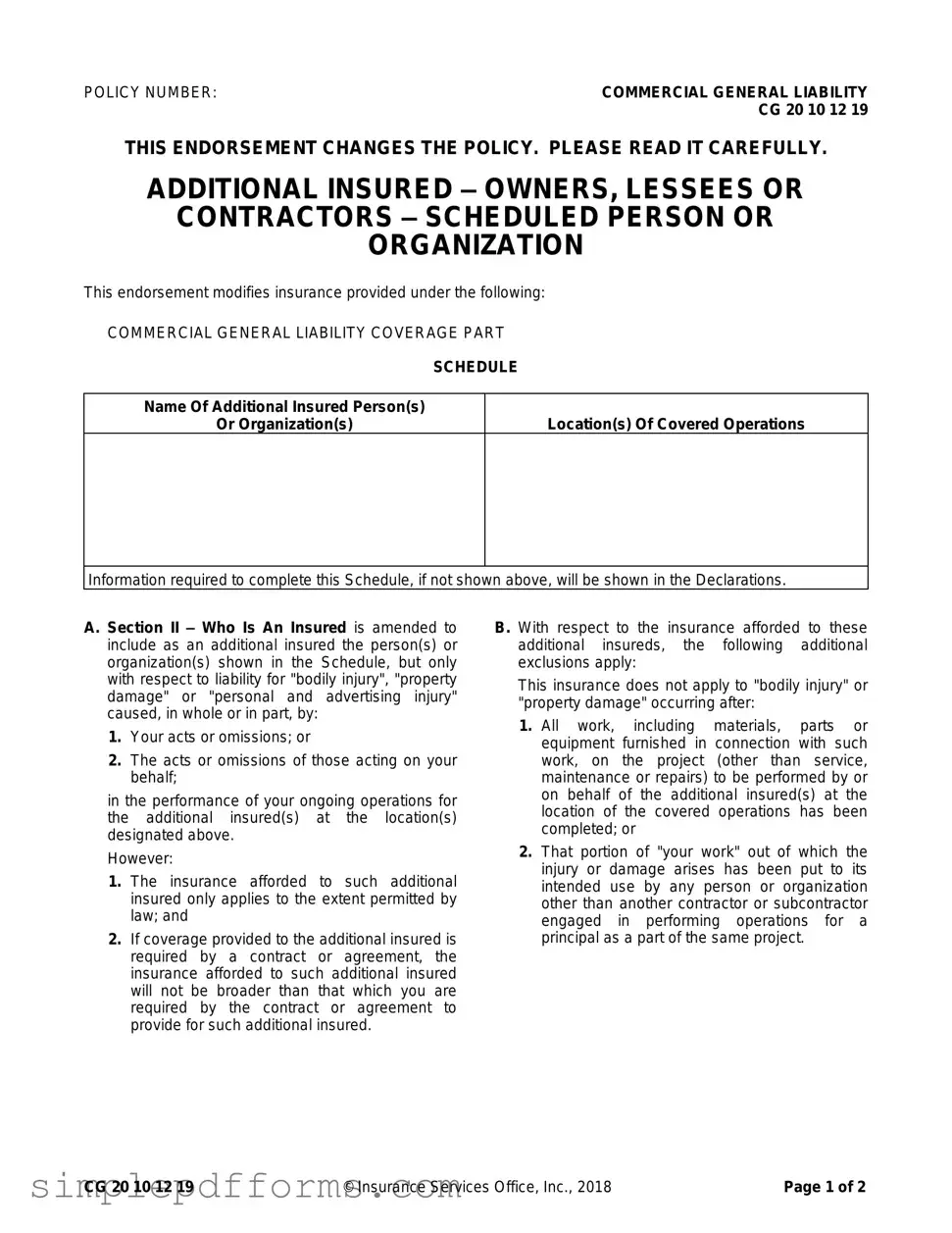When filling out the CG 20 10 07 04 Liability Endorsement form, many people make critical mistakes that can lead to complications down the line. One common error is failing to clearly list the additional insured person(s) or organization(s) in the designated section. This omission can result in a lack of coverage, leaving parties exposed to potential liability.
Another mistake is not providing the correct location(s) of covered operations. If the locations are inaccurate or incomplete, it can create confusion regarding where the coverage applies. This could lead to disputes over claims and ultimately impact the effectiveness of the insurance.
Many individuals also overlook the importance of understanding the implications of the endorsement. They may not realize that the coverage for additional insureds is limited to specific situations. If the form is completed without this understanding, it could lead to unexpected gaps in coverage.
In addition, some people neglect to read the fine print regarding exclusions. The form states that coverage does not apply after certain conditions are met, such as when all work has been completed. Ignoring these exclusions can lead to significant financial repercussions if a claim arises after the work is done.
Another frequent mistake is misunderstanding the limits of insurance. Many individuals fail to recognize that the endorsement will not increase the applicable limits of insurance. If the amount required by a contract is less than the available limits, this can create confusion during claims processing.
Additionally, some may not provide accurate information regarding their acts or omissions. This section is crucial, as it defines the circumstances under which the additional insured is covered. Inaccurate descriptions can lead to denied claims and disputes over liability.
People also often forget to update the form when changes occur. If there are modifications to the additional insureds or the locations of operations, these should be reflected on the form. Neglecting to make these updates can result in outdated information that undermines the policy's effectiveness.
Lastly, not consulting with an insurance professional can lead to incomplete or incorrect submissions. Many individuals assume they understand the requirements fully, but having expert guidance can help avoid pitfalls. It’s always wise to seek assistance to ensure the form is filled out accurately and comprehensively.

